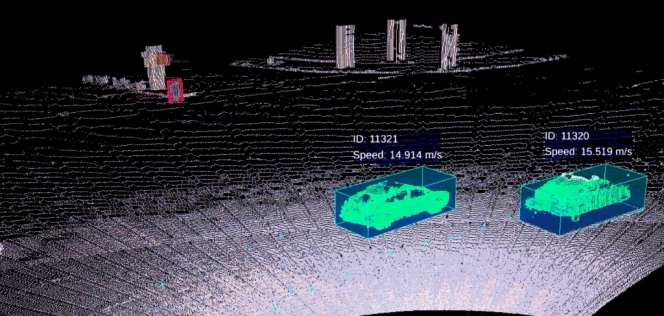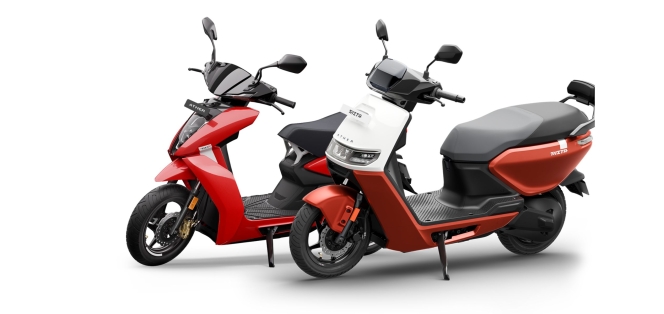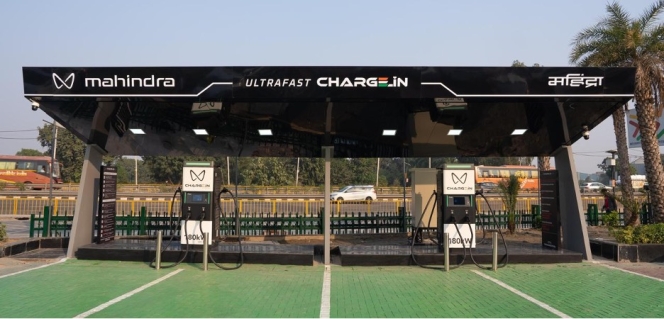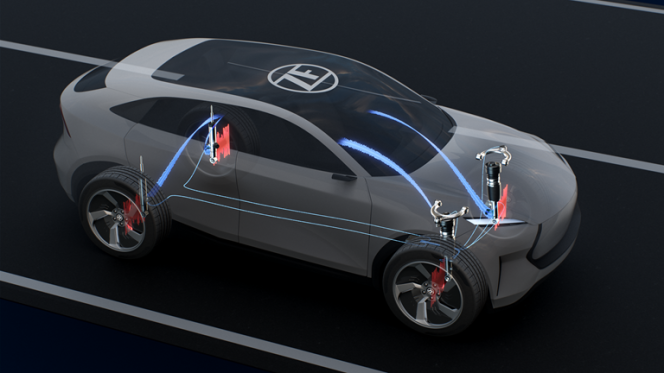- Pirelli
- Science Based Targets initiative
- Greenhouse Gas Emissions
- Paris Agreement
- Net Zero
- SBTi
- Sustainability
- Global Warming
Promote Auto LPG While Awaiting EVs For Clean Air
- By 0
- April 05, 2020

A recent study conducted by researchers from the International Council on Clean Transportation (ICCT), George Washington University, and the University of Colorado Boulder in the US estimated that vehicle tailpipe emissions were linked to about 385,000 premature deaths from ambient PM 2.5 and ozone worldwide in 2015. An estimated 70 percent of these occurred in the four largest vehicle markets -- China, India, the EU, and the US.
While the figures paint a grim picture, we see no urgency in bringing about an immediate improvement in air quality standards. The government of India has put a long-term policy focus on shifting to electricity as a transport fuel. However, this will bear fruits only after at least a decade of work and infrastructure development. As we wait for electric vehicles, we must not lose the opportunity to use the readily available cleaner fuels such as auto LPG which can clean the urban air faster.
In the wait for the roll-out of EVs, India is missing on the immediate environmental benefits of auto LPG, an easily deployable source of transport power. It emits up to 120 times less particulate emissions than diesel vehicles; 96 percent less nitrogen dioxides (NOx) than diesel and 68 percent less NOx than petrol. It is also more than 30 percent cheaper than petrol. Over 26 million vehicles across 70 countries run on auto LPG. South Korea sells 4 million tonnes of this fuel annually. In the US, Russia, Japan and China, governments incentivize auto gas usage with tax breaks on sales, excise, registration, parking and road use charges.
Two-wheelers
More than 40 percent of vehicular pollution in Delhi comes from two-wheelers. Across the country, 2-wheelers account for more than 75 percent of vehicles on roads. We need to start pushing two-wheelers towards cleaner fuels as well. Auto LPG makes for the most viable alternative. The 2-wheeler conversion kit is available for about INR 5000-5500 along with a convenient side fitment of the LPG Tank.
Promote Gaseous Fuels
While a large number of buses and public transport vehicles in several cities are running on CNG, it is also necessary to convert a substantial number of private vehicles to gaseous fuels. Rapidly shifting to a mix of CNG and auto LPG is an easier task than shifting to EVs. While the government supports CNG through the City Gas Distribution Project, it has left out auto LPG.
Auto LPG has several advantages over CNG, including 5-6 times less installation cost for refueling stations and less engine performance loss. Globally, auto LPG is the third most commonly used automotive fuel after petrol and diesel. Seven of the 10 large car manufacturers produce LPG-powered cars. Auto LPG occupies very little space in car boots and can be transported in cylinders in trucks to distant outposts.
Auto LPG is already available in 500 Indian cities and it neither needs any major infrastructural overhaul nor any subsidies to encourage consumers. It is important that the government frames policies that are favorable to all alternative fuels to allow consumers a wider choice.
An urgent policy intervention is to change the Type Approval norms of the Ministry of Road Transport for vehicles converting to gaseous fuels. In India companies have to renew the extremely costly Type Approvals for auto LPG and CNG conversions every three years. This has resulted in a rapid dwindling of players in the retro-fitment market. The Type Approval Validity must be made perpetual in line with the European norms. Similarly, the GST rate on LPG conversion kits for vehicles must be reduced from 28 percent to 5 percent as a measure to push up the rate of vehicle conversion to environment-friendly fuels. The GST rate on auto LPG also needs to be brought down from 18 percent.
(Suyash Gupta Is Director General of Indian Auto LPG Coalition; views expressed are personal)
AEye To Showcase Apollo LiDAR Technology With 1km Range At CES 2026
- By MT Bureau
- December 21, 2025

AEye, a provider of LiDAR solutions and manufacturer of the Apollo LiDAR sensor, has announced plans to demonstrate its Apollo sensing solution at CES 2026.
The company will present the Apollo LiDAR sensor, a solution for detecting objects at distances of up to one kilometre. The sensor features a form factor that allows for integration behind windscreens. AEye also plans to highlight how the Apollo and OPTIS solutions can be used for infrastructure and logistics. OPTIS uses computing to deliver 3D perception and analytics for drones, intersections, shipping corridors and logistics hubs.
These technologies are designed to assist with safety, efficiency and visibility. The company’s focus on infrastructure and logistics reflects a strategy for global growth, including in regions such as India, where investment in smart cities and transport networks is increasing.
Matt Fisch, CEO, AEye, said, “CES brings together the most important players in transportation and mobility, making it an ideal venue for us to demonstrate how Apollo and OPTIS are redefining what’s possible with LiDAR. With unmatched range and real-time AI-driven perception, we’re helping our customers tackle complex transportation and infrastructure challenges with scalable solutions built for real-world deployment. We are also looking forward to announcing our next-generation LiDAR, with range capabilities extending beyond one kilometre, underscoring the company’s continued leadership in long-range and ultra-long-range perception.”
The presentation will also include a preview of a LiDAR sensor with detection capabilities exceeding one kilometre, intended for long-range perception requirements.
Image for representational purpose only.
Ather Energy’s New Subsidiary To Focus On Auto Insurance Business
- By MT Bureau
- December 19, 2025

Bengaluru-based electric vehicle maker Ather Energy has confirmed its plans to enter the auto insurance services space by incorporating a wholly-owned subsidiary that will operate as a Corporate Agent.
The move is part of the EV maker’s plans to owmake nership experience more seamless, by providing auto insurance policies, in partnership with multiple insurers. This will also provide a recurring revenue stream by leveraging its existing user base.
Ather Energy also aims to innovative around EV-specific insurance products, simplify renewals and also improve attach rates over time.
Ravneet Singh Phokela, Chief Business Officer, Ather Energy, said, “We have always believed that a good ownership experience goes beyond the vehicle itself. Insurance is a critical part of that journey today, and it’s an area where the experience can be made significantly simpler and more predictable for customers. By bringing insurance distribution closer to the Ather ecosystem, we can make it simpler, more transparent, and better aligned with how our customers actually use their vehicles. Over time, this also gives us the ability to work with partners to design auto insurance products that reflect real EV usage, rather than adapting legacy frameworks. This is a measured but deliberate step, focused on strengthening the ownership experience while building a capability that complements our core offering and scales with the business.”
The EV maker stated that this move is a natural extension, as it can utilise its large customer base, which equates to no additional customer acquisition cost.
Ather Energy stated that entering the auto insurance space is part of its larger EV ecosystem building mission, which goes beyond just selling products, charging infrastructure, servicing and accessories among others.
Exicom Launches Exciom One EV Charging Rollout Solution
- By MT Bureau
- December 18, 2025

Exicom Tele-Systems has introduced Exicom One, a solution for the construction and operation of electric vehicle charging infrastructure. The service handles site surveys, electrical setup, software, operations and maintenance.
The launch coincides with the expansion of charging networks by Charge Point Operators (CPOs) in India. These organisations plan to deploy chargers, including DC units, by 2030.
The solution provides a framework for infrastructure deployment by combining hardware and software. The company is providing end-to-end support right from site assessment & planning for pre-installation, to civil works, electrical integration and hardware setup for deployment. It also provides AI-driven management, diagnostics and maintenance to support the EV charging operations.
Exicom One manages the orchestration of firmware and software. The platform allows businesses to monitor and optimise stations in real time.
The company recently partnered with an EV manufacturer to install charging stations along highway corridors and at traffic points. The infrastructure is designed to integrate renewable energy systems and Vehicle-to-Grid (V2G) applications.
The service also utilises Harmony Connect, an AI platform for predictive maintenance.
Anant Nahata, Managing Director and CEO, Exicom, said, “India’s EV story will only move as fast as the infrastructure behind it. While hardware innovation gets most of the attention, it is execution on the ground that truly defines success. Exicom One is built to remove that friction by bringing every piece of the puzzle together under one accountable partner. It is a smarter, faster way for CPOs and fleets to scale with confidence and focus on what really matters: delivering reliable charging experiences.”
ZF To Present Software Active Noise Reduction For Vehicle Chassis At CES
- By MT Bureau
- December 17, 2025

German tier 1 supplier ZF is presenting a new ‘Active Noise Reduction’ software function for vehicle chassis at the Consumer Electronics Show (CES) 2026. The purely software-based function reduces in-vehicle tyre noise transmitted through chassis components without requiring additional hardware. The company plans to expand the use of the function to other ZF chassis actuators in the future.
The solution uses ZF’s Smart Chassis Sensor with an integrated acceleration sensor to measure vibrations from the tyres. A developed algorithm recognises the characteristic noise patterns of tyre cavity noise around 200 hertz.
The software generates a counter-signal via ZF’s cubiX software through the valves of semi-active dampers (CDC). The function uses micro-movements of the damper to specifically reduce noise interference without impairing the damper function.
The technology achieves noise reductions of more than 3 dB, with future potential for up to 10 dB. This software-based noise reduction is achieved without additional installation costs or space requirements. Active Noise Reduction can be adapted to different vehicle types via software, opening a market for lower-priced vehicles.
Dr. Peter Holdmann, Member of the ZF Board of Management and Head of Division Chassis Solutions, said, “Active Noise Reduction is an excellent example of how we use smart algorithms to make ZF components even more efficient. This gives our semi-active CDC dampers a clear unique selling point in the market and sets new standards in comfort – without the need for any additional noise dampening hardware.”
Series production is scheduled to start in 2028. In the future, the function may be used in other ZF actuators, such as for active reduction of brake squeal.
Holdmann added, “Thanks to our system expertise, we are able to offer our mechatronic actuators as true innovation drivers with the help of smart algorithms and we will extend our software-based control approach to other ZF actuators in the future. The goal for us is clear: mechatronic actuators that are capable of efficiently reducing both their own and external noise with the help of software.”
The new function fits into ZF’s Chassis 2.0 product strategy, which uses intelligent and networkable actuators to enable new chassis functions via software.
Holdmann noted: “With our Chassis 2.0, we are laying the foundation for the software-defined vehicle.”






Comments (0)
ADD COMMENT